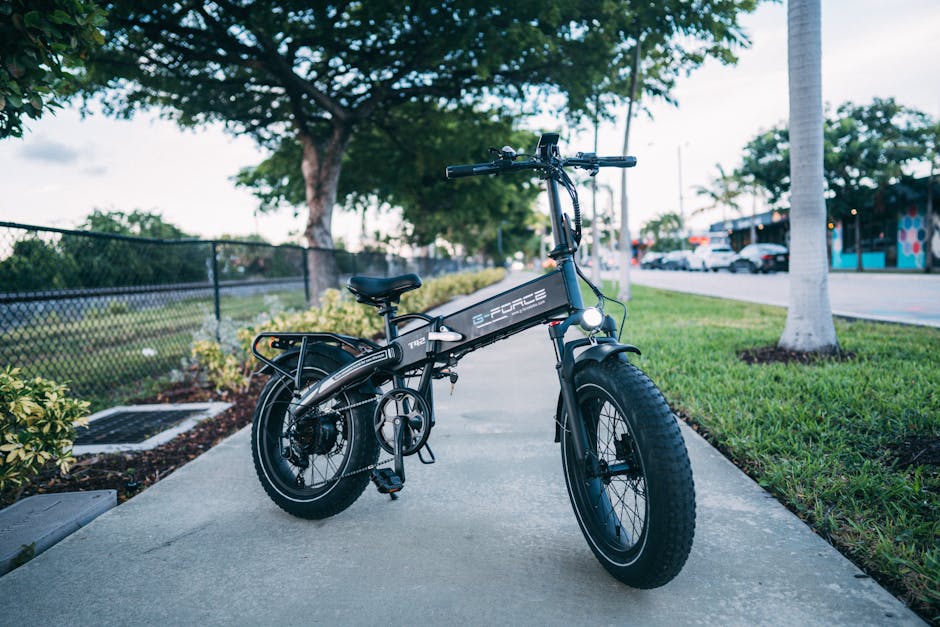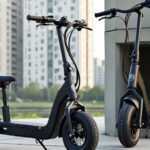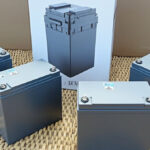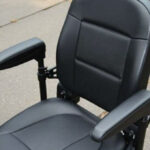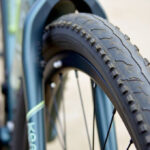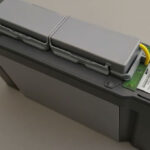Get Back on the Road: eBike Troubleshooting Tips
If you’re looking for an eBike troubleshooting guide, you’ve come to the right place. eBikes are a fantastic way to get around, merging convenience with environmental benefits, but they do require occasional maintenance. Below is a quick guide to help you address some common eBike issues:
- Battery Problems:
- Check for secure and corrosion-free connections
- Try a different charger or power source
- Inspect battery cells for damage
- Motor Assistance Issues:
- Ensure the battery is adequately charged
- Check motor cables and settings
- Display and Control Unit Issues:
- Secure all connections
- Reset the system by disconnecting the battery briefly
eBike maintenance does share similarities with traditional bikes, but there are unique challenges due to their electrical components. We’ll walk you through typical issues and how to resolve them, so you can enjoy a smooth and trouble-free ride.

EBike troubleshooting guide terms made easy:
Common eBike Problems and How to Fix Them
Even the best eBikes can experience issues from time to time. Let’s explore some of the most common problems and how you can fix them yourself.
Battery Issues
Battery problems are one of the most frequent issues eBike owners encounter. Here’s how to troubleshoot:
Battery Not Charging:
- Check Connections: Ensure all connections are secure and free from corrosion.
- Try a Different Charger: Sometimes the charger itself is the problem. Borrow a charger from a friend or visit a local shop to test.
- Inspect Battery Cells: Look for any visible damage or swelling. If the battery cells are damaged, it’s time for a replacement.
Battery Voltage Check:
- Use a Voltmeter: Measure the battery voltage. A healthy battery should read close to its rated voltage. If the voltage is significantly lower, the battery may be failing.
Charger Problems:
- Indicator Light: Check if the charger’s indicator light is functioning. A faulty light can be misleading.
- Charger Port Issues: Inspect the charger port for any debris or damage. Clean it carefully if needed.
- Voltmeter Testing: Use a voltmeter to check if the charger is delivering the correct voltage.
Controller Problems
The controller is like the brain of your eBike, coordinating various electrical components. Here’s how to troubleshoot controller issues:
Controller Malfunction:
- Restart the eBike: Sometimes a simple restart can fix the problem, just like with a smartphone.
- Check Power Switch: Ensure the power switch is in the “on” position.
Wiring Issues:
- Loose or Disconnected Wires: Inspect all wiring connections. Reconnect any loose or disconnected wires. Wiring is usually color-coded, so match the colors.
- Frayed Insulation: Look for any signs of wear or damage on the wires. Replace any damaged wires to prevent short circuits.
Fuse and Circuit Breaker:
- Reset Circuit Breaker: If your eBike has a circuit breaker, reset it by pushing it back in.
- Check Fuse: Remove the fuse and hold it up to the light. If it’s burned out, replace it with a new one.
Throttle Malfunctions
Throttle issues can be frustrating, but they’re often easy to fix:
Throttle Stuck:
- Check Throttle Position: Ensure the throttle isn’t stuck in the rearmost position. If it is, gently pull it back into place.
Throttle Replacement:
- Inspect Spring Tension: The throttle spring might be weak or damaged. If so, replacing the throttle may be necessary.
Throttle Assist Issues:
- Cable Connections: Ensure that the throttle cable is securely connected to the throttle mechanism, controller, and battery. Loose or damaged connections can disrupt power flow.
Pedal Assist Issues
Pedal Assist Systems (PAS) can sometimes malfunction. Here’s how to troubleshoot:
PAS Not Working:
- Identify the System: Different eBikes have different PAS types. Locate the magnetic ring and sensors.
Magnet Ring Alignment:
- Check Alignment: Misaligned magnets can disrupt power delivery. Adjust the magnet ring’s position using a flathead screwdriver.
- Clean the Ring and Sensors: Dirt or debris can interfere with proper alignment. Clean these components thoroughly.
Power Inconsistencies:
- Inspect Sensors: Ensure the sensors are correctly positioned and clean. Misalignment can cause power inconsistencies.
Brake Problems
Brakes are crucial for safety. Here’s how to address common brake issues:
- Check Brake Pads: Worn brake pads can cause squealing or reduced braking efficiency. Replace them if they’re worn out.
Brake Lever Issues:
- Inspect Levers: Ensure the brake levers are functioning correctly. Tighten any loose components.
Brake Motor Inhibitor:
- Check Inhibitor Function: The brake motor inhibitor stops the motor when you brake. Ensure it’s working correctly to avoid safety issues.
By following these eBike troubleshooting guide steps, you can keep your electric bike in top condition and enjoy a smooth ride. Next, we’ll explore how to diagnose and solve eBike electrical issues.
How to Diagnose and Solve eBike Electrical Issues
Checking Wiring Connections
Electrical faults can be tricky, but often the issue lies in the wiring. Loose or frayed wires can disrupt the electrical flow.
Loose Wires:
- Inspect Connections: Start by checking all wiring connections. Make sure they are securely attached. Wiring is usually color-coded, so match the colors (e.g., blue wire to blue port).
- Reconnect Loose Wires: If you find any loose wires, gently reconnect them. Ensure they are snug and secure.
Frayed Insulation:
- Look for Damage: Check for any signs of frayed insulation or damaged connectors. Damaged wires can cause short circuits and other electrical issues.
- Replace Damaged Wires: If you find any damaged wires, replace them with new ones of the appropriate gauge and insulation. If unsure, seek help from a qualified technician.

Testing Battery Voltage
Battery issues are common in eBikes. A simple way to diagnose battery problems is by testing the voltage.
Using a Voltmeter:
- Measure Voltage: Attach the voltmeter prongs to the battery’s positive and negative terminals. A healthy battery should read close to its rated voltage.
- Low Voltage: If the voltage is significantly lower than expected, the battery may be failing. It might need a recharge or replacement.
Battery Life:
- Check Battery Age: If the battery is old or has been left uncharged for a long time, it might be time for a replacement. Batteries that haven’t been charged in over six months often fail.
Inspecting the Charger
Sometimes, the problem isn’t the battery but the charger itself. A faulty charger can prevent your eBike from charging properly.
Charger Indicator Light:
- Check Light: Plug the charger into an outlet. The indicator light should come on and stay on steadily. If it doesn’t, the charger might be faulty.
Charger Port Issues:
- Inspect Port: Look at the charger port for any debris or damage. Clean it carefully if needed to ensure a proper connection.
Voltmeter Testing:
- Test Charger Voltage: Use a voltmeter to check if the charger is delivering the correct voltage. The reading should be a little higher than the designated voltage of the charger. If it’s below, the charger might need replacing.

By following these steps, you can diagnose and solve common eBike electrical issues, ensuring a smooth ride. Next, we’ll dive into mechanical troubleshooting for eBikes.
Mechanical Troubleshooting for eBikes
Mechanical faults can be just as frustrating as electrical ones. Let’s look at common problems and how to fix them.
Frame and Tire Issues
Frame Damage:
- Check for Cracks or Dents: Inspect the frame for any signs of damage. A tilted or severely dented frame needs replacement.
- Listen for Unusual Noises: Strange sounds can indicate a weakened frame. If you hear creaking or popping, it’s time for a closer look.
Tire Problems:
- Tire Punctures: Flat tires are common. Check for sharp objects stuck in the tire. Patch small punctures or replace the inner tube for larger holes.
- Tire Pressure: Low tire pressure makes riding hard and slow. Use a tire gauge to check and inflate to the recommended pressure. Over-inflated tires can rub against the frame, so find the right balance.
Motor Connection Issues
Rear Hub Motor:
- Check for Overheating: If your motor feels hot, it may be overworked. Give it a rest and check for any obstructions that could be causing strain.
- Listen for Noises: Clicking or grinding sounds from the motor can mean loose spokes or internal issues. Tighten any loose parts and consider professional help for internal repairs.
Wire Damage:
- Inspect Motor Wires: Look at the wires connecting the motor. Damaged or frayed wires can disrupt power flow. Replace any damaged wires with ones of the same gauge.
- Secure Connections: Ensure all wire connections are tight and secure. Loose wires can cause intermittent power loss.
By keeping an eye on these mechanical aspects, you can prevent small issues from becoming big problems. Next, we’ll cover preventative maintenance tips to keep your eBike in top shape.
Preventative Maintenance Tips for eBikes
Battery Care
Proper battery care is key to ensuring your eBike runs smoothly and lasts longer.
- Charging Guidelines: Use the charger provided by the manufacturer. Avoid letting the battery deplete completely or stay fully charged for long periods. Charge it after each ride or when the battery level is low.
- Storage Tips: Store your battery in a cool, dry place. Extreme temperatures can harm battery performance. Avoid leaving it in direct sunlight or freezing conditions.
- Avoiding Overcharging: Overcharging can strain the battery. Follow the manufacturer’s recommendations on charging times to prevent this.
Brake Tuning
Well-maintained brakes are crucial for your safety.
- Brake Pad Alignment: Check the brake pads regularly. They should be aligned with the brake discs and have enough thickness. Replace them if they’re worn out.
- Cable Adjustment: Inspect the brake cables for fraying or stretching. Adjust or replace them if necessary to ensure responsive braking.
- Brake System Inspection: Look at the brake calipers and discs for damage or warping. Address any issues promptly to maintain optimal braking performance.
General Maintenance
Regular maintenance keeps your eBike in top condition.
- Cleaning: Clean your eBike with a gentle soap and water solution. Pay attention to hard-to-reach areas like the drivetrain and suspension components. Dry the bike thoroughly to prevent rust.
- Lubrication: Apply lubricant to the chain, derailleur, and brake pivots. This reduces friction and wear, ensuring smooth operation.
- Software Updates: Keep your eBike’s software up-to-date. Updates often include bug fixes and performance improvements. Check the manufacturer’s website or app for the latest firmware and follow their instructions.
By following these simple tips, you can extend the life of your eBike and enjoy a smoother, safer ride. Next, we’ll dive into some frequently asked questions about eBike troubleshooting.
Frequently Asked Questions about eBike Troubleshooting
Why did my eBike suddenly stop working?
There are several reasons why your eBike might suddenly stop working:
- Battery Issues: A dead or low battery is often the culprit. Ensure your battery is fully charged. Check the battery connections for any loose or corroded terminals.
- Motor Problems: Overheating or internal faults in the motor can cause it to shut down. Let the motor cool down and inspect for any visible damage.
- Wiring Faults: Loose or frayed wires can disrupt the electrical flow. Inspect all wiring connections, especially around the battery and motor.
How to reset an electric bike?
Resetting your eBike can resolve various minor issues. Here’s how to do it:
- Resetting the Controller: Turn off the bike and disconnect the battery. Wait for a few minutes, then reconnect the battery and turn the bike on.
- Display Unit Reset: Some eBikes have a reset button on the display unit. Refer to your user manual for specific instructions.
- Power Cycle: Turn off the bike, remove the battery, wait for about 10 minutes, and then reinsert the battery and turn the bike back on.
Why is my eBike battery charging but not working?
If your battery charges but the bike still doesn’t work, consider these potential issues:
- Battery Connections: Ensure the battery is properly connected to the bike. Look for any misaligned or dirty pins.
- Charger Port: The charger port might be faulty. Check for any debris or damage in the port.
- Battery Replacement: If the battery charges but fails during use, it might be aging or defective. Consider testing the voltage with a voltmeter or replacing the battery if it’s old.
For more detailed steps on battery troubleshooting, refer to our eBike troubleshooting guide.
By addressing these common issues, you can get back on the road quickly and enjoy your ride. Let’s move on to diagnosing and solving electrical issues in the next section.
Conclusion
At Doot Scoot, we understand the importance of keeping your eBike in top shape. Regular eBike maintenance can prevent many common issues and ensure a smooth, enjoyable ride. Here are some final troubleshooting tips and maintenance advice to help you keep your eBike running efficiently.
1. Regular Maintenance is Key
- Battery Care: Always keep your battery charged but avoid letting it run completely empty. Store it in a cool, dry place when not in use.
- Brake Tuning: Regularly check your brake pads for wear and ensure the brake cables are properly adjusted.
- General Inspection: Periodically inspect your eBike for any loose bolts, damaged wires, or other mechanical issues.
2. Troubleshooting Tips
- Battery Issues: If your battery isn’t charging, check the connections and try a different charger. If the problem persists, it might be time for a battery replacement.
- Controller Problems: Ensure all wiring connections are secure. If your controller malfunctions, resetting it by disconnecting and reconnecting the battery can often help.
- Throttle and Pedal Assist: Ensure the throttle cables are intact and the magnet ring for pedal assist is properly aligned. Clean any debris that might obstruct their operation.
3. Customer Support
If you encounter a problem you can’t fix, don’t hesitate to reach out for help. At Doot Scoot, we provide excellent customer support to guide you through any issues. Whether it’s via email, live chat, or social media, our team is ready to assist you.
For more detailed troubleshooting and maintenance tips, check out our comprehensive eBike troubleshooting guide. And if you’re looking to upgrade or find the best eBike for your needs, visit our best eBike 2023 page for expert reviews and recommendations.
By following these tips and utilizing our resources, you can keep your eBike in excellent condition and enjoy many trouble-free rides. Happy riding!
